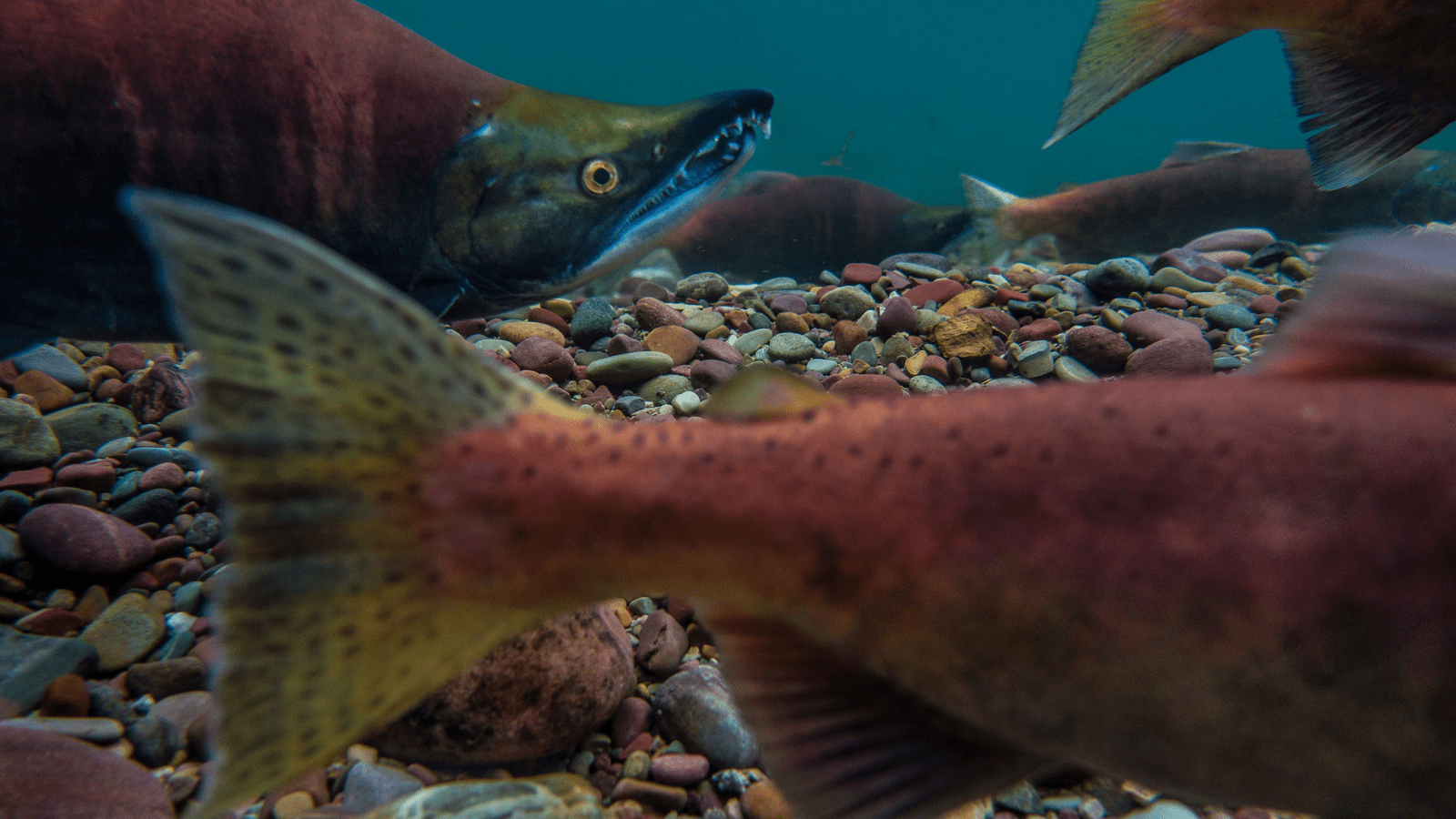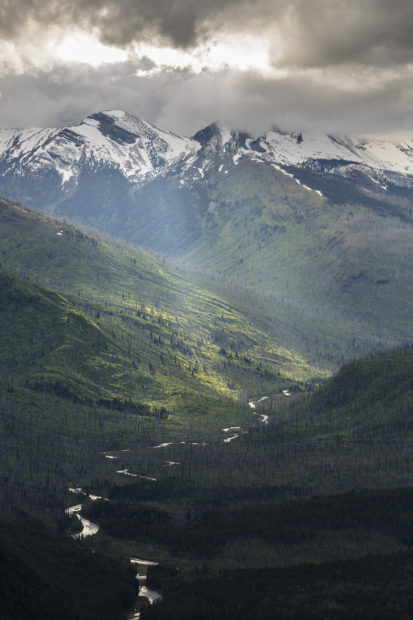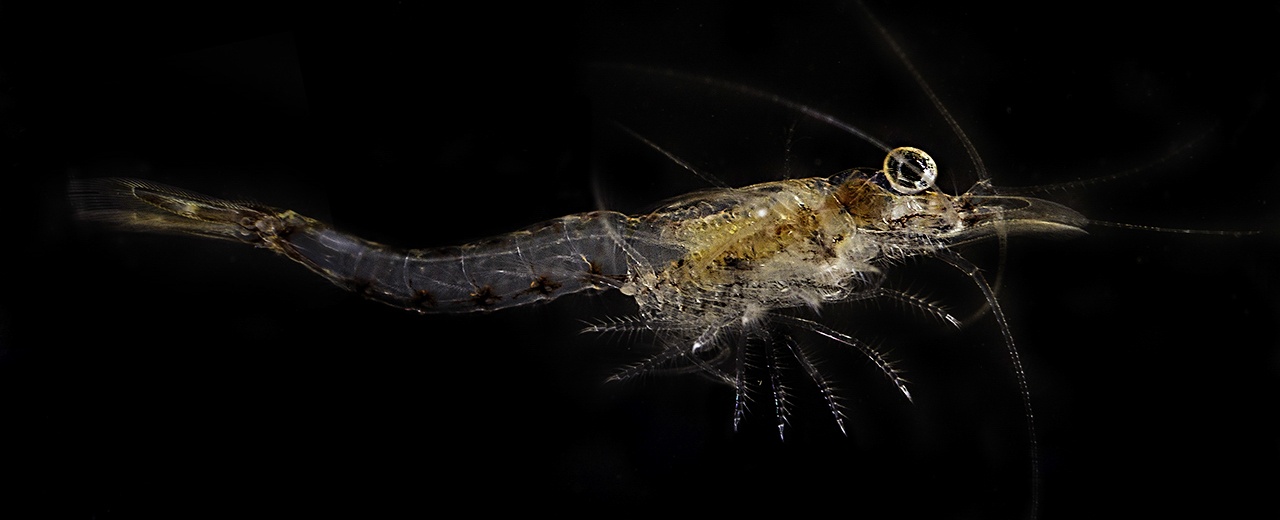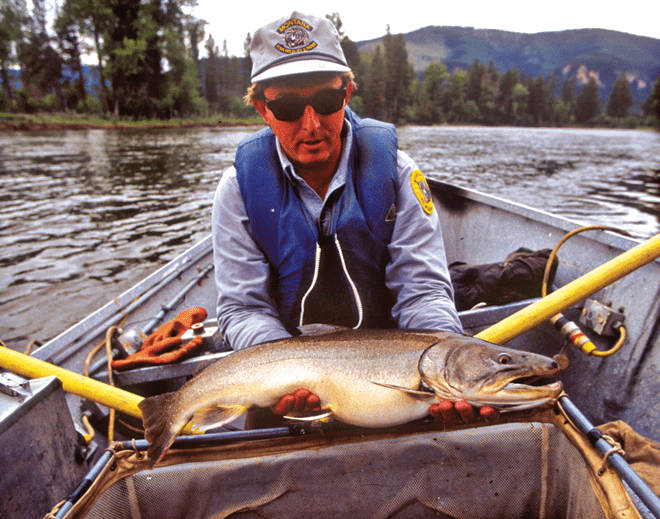We have much more to do and your continued support is needed now more than ever.
FLATHEAD LAKE: THE STORY OF A FISH, A SHRIMP, AND A BAD CASE OF HUBRIS

It’s the mid-1900s in northwestern Montana. McDonald Creek runs bright red with kokanee salmon swimming upstream to spawning grounds. They carry the future of their population on their red backs as well as a booming portion of the region’s industry. Bears, eagles, fishermen, photographers, and sightseers flock to the Flathead watershed each season, all drawn by this one species.

Things are going so well that it could be hard to resist wondering how it could get even better. What if the kokanee had more, larger food to eat? Right now they’re just munching on microscopic zooplankton. But what if they could get more bite for their fight? Bigger food means bigger fish–and more of them! This could mean more bears and eagles, more anglers, photographers, and sightseers!
And so that’s what they did; fishery managers introduced Mysis shrimp to the watershed. Mysis found their way to Flathead Lake by 1981, home to thousands of adult kokanee; and suddenly—crash!
Kokanee populations nosedived, their numbers reading red as their spawner backs, while Mysis numbers sky-rocketed. With kokanee gone by 1989, the bears, eagles, anglers, and wildlife watchers had nothing to come back to. Kokanee tourism fizzled and died.
What went so wrong? Why didn’t the kokanee population also grow with the introduction of Mysis, a seemingly better food source? It had worked in other lakes. Why not here?
As it turns out, kokanee weren’t able to eat many Mysis, if any at all. And, after the arrival of Mysis, kokanee were increasingly unable to eat zooplankton—and we’ll soon discover why. While kokanee weren’t eating Mysis or zooplankton, another species, lake trout, were happily chomping up both Mysis and kokanee.
How did it go so wrong in so many ways?

As Dr. Jim Elser, director of the Flathead Lake Biological Station, says, “It’s a story of unintended consequences, a story of hubris, I guess, in thinking we know what’s going on. We don’t often have that knowledge or understanding.”
BELOW THE WATERLINE: DEATH BY THOUSANDS AND THOUSANDS OF…SHRIMP?

In all the years my family made the trek up to Flathead to join swimmers, boaters, paddle-boarders, and water-skiers, I never knew the drama that unfolded beneath the water’s surface.
Historically, Flathead Lake was home to 11 native fish, including westslope cutthroat trout and bull trout, important species to Montana’s Indigenous peoples. During the last 200 years, 19 nonnative fish species have been introduced, including kokanee in 1916, which quickly grew in popularity with locals, tourists, and other wildlife, bolstering the region’s economy.
Then the unexpected happened: this vibrant population of fish was taken down by a two-centimeter long shrimp.
Dr. Elser, who specializes in limnology (the study of fresh-water systems), says it has to do with Flathead Lake’s depth and the food web within those depths.
Kokanee salmon and Mysis shrimp both eat zooplankton, which live in the lake’s top layers, but they don’t eat at the same time. At the end of the day, kokanee head down with the sun while the many Mysis come up from below to eat at night.
Late 1960s: Unlike other lakes, Flathead is deep enough that not only do kokanee and Mysis not mingle because of their daily routes, but Mysis eat kokanee’s food source while kokanee are down for the night perhaps dreaming fish dreams full of zooplankton only to wake up to a living nightmare empty of zooplankton and full of ravenous lake trout. By 1989, eight years after Mysis were first found in Flathead, there were no longer any kokanee salmon in the lake.
Lake trout and Mysis shrimp were both introduced to Montana from the Great Lakes where Mysis is a favored food for lake trout.
“They should have anticipated the relationship between lake trout and Mysis,” Dr. Elser points out.
But they didn’t.
And while kokanee missed out on both zooplankton and Mysis, lake trout thrived off of Mysis, allowing them to also eat lots of kokanee (not to mention other species native to the lake). To make bad things worse for kokanee, an increase in another introduced species, lake whitefish, also feasted on zooplankton.
With all those strikes against them, it’s no wonder there’s no surviving population of kokanee in Flathead Lake today while Mysis and lake trout thrive.
SHRIMPY CRUSTACEAN, BIG IMPACT
The troubles in Flathead Lake don’t stop there. With the rise in lake trout and lake whitefish, there’s been a decline in bull trout and westslope cutthroat trout, two native species whose numbers are struggling all across the region. Both of these species are important historically, culturally, and spiritually to this area’s Tribes, as they have been for thousands of years.

The story of Flathead Lake’s kokanee salmon and Mysis shrimp is certainly a cautionary tale. Already contending with new neighbors, this attempt to bolster a nonnative species made Flathead even less hospitable for its native populations. Many such effects on the lake’s ecology have been discovered, but more, from climate change, dams, and fertilization, are still to be seen.
As Dr. Elser puts it, “If it’s not broken…Ecosystems are super complex, and we don’t always know what will happen next. Tinker with them at your own peril.”





















